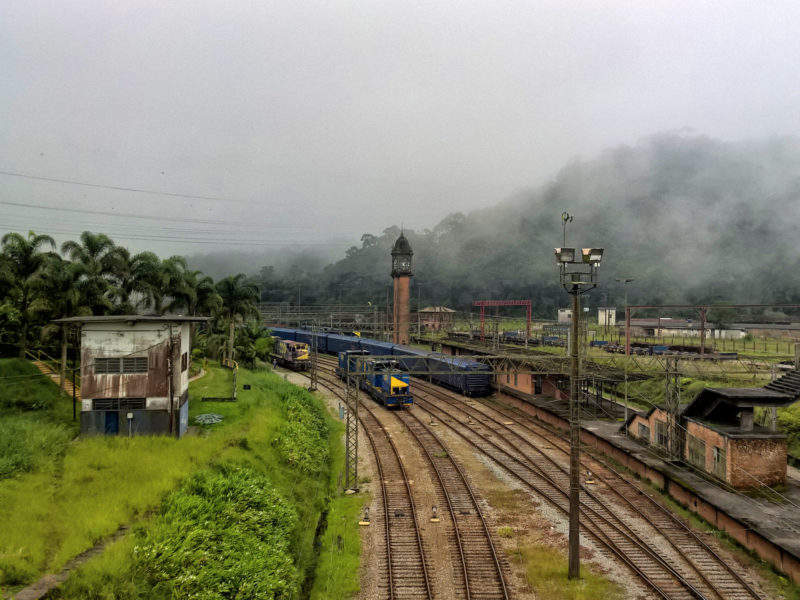- By Della tj
- September 29, 2025
- Rail Freight, Shipping
Global supply chains need faster and more reliable transport. China to UK rail freight provides a balance between speed and cost, making it the preferred option for many importers. It connects China’s factories with the UK market through efficient rail networks across Eurasia.
What Is China to UK Rail Freight?
China to UK rail freight is the movement of goods via the Eurasian railway network. Trains connect Chinese hubs like Chongqing, Chengdu, and Yiwu with European gateways, and then onward to the UK. Transit averages 18–22 days, faster than sea freight but cheaper than air freight.
How Does the Rail Freight Process Work?
The process involves several steps:
- Cargo collection from Chinese suppliers.
- Export customs clearance at origin.
- Rail transport through Central Asia and Europe.
- Customs clearance in Europe.
- Final delivery by truck or feeder services into the UK.
This multimodal flow ensures stable delivery schedules while lowering logistics risks.
Cost Comparison: Rail vs Air vs Sea Freight
| Mode | Transit Time | Avg. 40HQ Cost | Pros | Cons |
|---|---|---|---|---|
| Sea Freight | 30–45 days | $2,500–$4,000 | Lowest cost, huge volumes | Long transit, port delays |
| Rail Freight | 18–22 days | $6,000–$7,500 | Faster, eco-friendly, reliable | More costly than sea |
| Air Freight | 5–7 days | $12,000–$18,000 | Fastest, urgent cargo | Very expensive, limited capacity |
Rail freight clearly fills the gap between speed and budget.
Suitable Cargo for Rail Transport
Rail freight suits mid-value and time-sensitive cargo. Examples include:
- Electronics (laptops, phones)
- Automotive parts
- Fashion and textiles
- Machinery and equipment
By contrast, urgent shipments still rely on air, while bulky low-value goods fit sea freight better.
Customs Documentation Checklist
| Document | Purpose |
|---|---|
| Commercial Invoice | Provides product and value details |
| Packing List | Lists cargo contents |
| Bill of Lading / Rail Waybill | Proof of shipment |
| Certificate of Origin | Confirms manufacturing location |
| Import License (if needed) | Required for controlled goods |
Proper paperwork reduces clearance delays at borders.
Real-World Case Studies
Case 1: Electronics from Chongqing to London
- Cargo: 40HQ container with 12 tons of laptops and accessories
- Mode: Rail freight via Duisburg (Germany), then truck delivery to London
- Cost: $7,200 including rail charges, transloading, and UK inland transport
- Transit Time: 20 days door-to-door
- Notes: Customs clearance completed in Duisburg without delay. Faster than sea freight by 15 days, enabling timely stock replenishment for a retail chain.
Case 2: Apparel from Yiwu to Birmingham
- Cargo: 5 tons of garments in LCL (shared container service)
- Mode: Rail freight consolidation, with transloading in Warsaw, Poland
- Cost: $1,800 for allocated space in container
- Transit Time: 19 days
- Notes: Importer saved costs by sharing space. Smooth clearance in Poland, then trucking to Birmingham. Ideal for SMEs testing new UK markets.
Challenges of Rail Freight
Despite advantages, challenges remain:
- Seasonal capacity shortages.
- Dependency on political stability along corridors.
- Gauge changes at borders cause handling delays.
- Higher cost compared to sea freight.
Nevertheless, forwarders provide solutions through advanced booking and multimodal support.
Benefits for Small and Medium Enterprises
SMEs benefit from:
- LCL (Less-than-Container-Load) services for smaller shipments.
- Predictable schedules compared to sea.
- Lower cost than air, making it suitable for growing importers.
Rail freight allows SMEs to compete in fast-moving markets.
Future Trends in China to UK Rail Freight
- Expansion of routes and service frequency.
- Digitalized cargo tracking for transparency.
- Sustainability focus: lower carbon emissions than air.
- Enhanced customs cooperation across borders.
These developments make rail freight a long-term alternative in global logistics.
Conclusion
China to UK rail freight has become a vital logistics option for importers seeking balance between cost and transit time. With competitive rates, mid-speed delivery, and sustainable advantages, rail is transforming international supply chains. For businesses managing imports from China, this service offers reliability, affordability, and eco-conscious benefits.
- Consult TJ China Freight Forwarding for the lowest quote. They will provide you with reliable, cost-effective service.
FAQ:
Q1.How much does China to UK rail freight cost per container?
The average cost for a 40HQ container is around $6,000–$7,500, depending on departure city, season, and service provider.
Q2.What is the standard transit time for China to UK rail freight?
Transit usually takes 18–22 days, which is faster than ocean freight but slower than urgent air cargo shipments.
Q3.Can small businesses use LCL service for rail freight from China?
Yes, LCL rail freight allows small businesses to share container space, paying only for the volume they actually use.
Q4.Is rail freight from China to the UK environmentally friendly?
Rail freight generates much lower CO₂ emissions than air, making it an eco-friendly logistics solution for sustainable supply chains.
Q5.Which UK cities are reachable by China to UK rail freight?
Major delivery hubs include London, Birmingham, and Manchester, with flexible onward trucking options across the entire UK.




